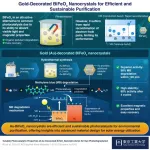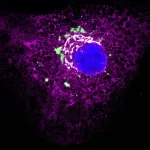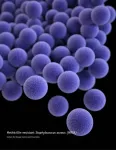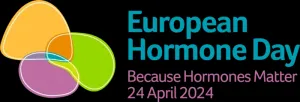(Press-News.org)
The need for sustainable and environment-friendly solutions has accelerated the global demand for green and renewable technologies. In this regard, semiconductor photocatalysts have emerged as an attractive solution, owing to their potential in mitigating pollutants and harnessing solar energy efficiently. Photocatalysts are materials that initiate chemical reactions when exposed to light. Despite their progress, commonly used photocatalysts suffer from reduced photocatalytic activity and a narrow operation range within the visible light spectrum. Additionally, they are difficult to recover from water-based solutions, limiting their applications in continuous processes.
Bismuth ferrite (BiFeO3), with its narrow band gap and magnetic properties, is an attractive alternative photocatalyst. The narrow band gap of BiFeO3 allows efficient utilization of light in the visible region to excite electrons from the valence band to the conduction band, leaving behind vacant holes. The excited electrons and holes both could induce chemical reactions that lead to the degradation of pollutants in an aqueous solution. In addition, the ferromagnetic property enables easy recovery of BiFeO3 from the solution. However, similar to common photocatalysts, BiFeO3 also suffers from rapid recombination of electron–hole pairs, significantly limiting its photocatalytic activity.
To address this issue, a team of researchers led by Associate Professor Tso-Fu Mark Chang from the Institute of Innovative Research at the Tokyo Institute of Technology, Japan, developed novel gold (Au) nanoparticle-decorated BiFeO3 nanocrystals. Their study, whose illustration is selected as the cover picture of the ACS Supplementary Cover, was published online in the journal ACS Applied Nano Materials on April 5, 2024.
Dr. Chang explains, “The incorporation of Au nanostructures in BiFeO3 can introduce more active sites for photodegradation reactions, owing to Au nanoparticle’s unique localized surface plasmon resonance, and the transfer of the excited electrons in the BiFeO3 to the gold domain suppresses the recombination of electron–hole pairs. The newly developed Au-decorated BiFeO3 nanocrystals leverage the synergistic characteristics of both mechanisms.”
The researchers fabricated the Au-BiFeO3 nanocrystals through a hydrothermal synthesis method and a simple solution process to decorate BiFeO3 with different amounts of Au. The team optimized the photocatalytic activity of the Au-BiFeO3 nanocrystals by evaluating their efficacy in degrading methylene blue (MB), a common denim dye. MB is highly soluble in water, posing a significant risk to aquatic life and human health. This also makes it the ideal pollutant to test the efficacy of photocatalysts.
Experiments revealed that the sample with 1.0% Au by weight exhibited the best activity, achieving an impressive 98% degradation efficiency under a 500-Watt xenon lamp within 120 minutes. Moreover, it also retained 80% of its original activity after four 120-minute cycles, demonstrating excellent stability. Additionally, there was negligible effect of Au on the magnetic properties of BiFeO3, suggesting excellent recyclability.
The researchers also studied the mechanisms by which Au enhances photocatalytic activity. When an Au-BiFeO3 nanocrystal is illuminated by light at suitable wavelengths, electrons in BiFeO3 are excited to the conduction band. Unlike the recombination that occurs in bare BiFeO3, the introduction of Au, which has a less negative fermi level than the conduction band of BiFeO3, facilitates the transfer of excited electrons from the conduction band to the Au domain, thereby promoting the accumulation of holes in BiFeO3. This enhances the photocatalytic activity of BiFeO3, enabling it to more easily induce the generation of hydroxy radicals in aqueous solutions. These hydroxyl radicals are highly active and readily attack MB molecules in the aqueous solution, thus converting them to harmless products.
“These findings enhance our understanding of gold−semiconductor interactions in photocatalysis and pave the way for the design and development of advanced nanocrystal materials,” remarks Dr. Chang. “Overall, our study highlights the promising activity and recyclability of Au-BiFeO3, underscoring its potential in efficient and sustainable environmental pollutant degradation.”
END
Researchers at the Centre for Genomic Regulation in Barcelona and the University of Cologne in Germany have developed a new experimental strategy to tackle scarring and fibrosis. Experiments with patient-derived human cells and animal models showed the strategy was effective, non-toxic and its effects reversible. The findings are published today in the journal Nature Communications.
Scarring occurs from the secretion and accumulation of various components – primarily proteins known as collagens – into the space between individual cells, usually occurring as a response to injury or damage. Excessive collagen secretion can also cause the buildup of fibrotic ...
A new collaboration brings together a world-leading interdisciplinary team with skills across quantum computing, genomics, and advanced algorithms. They aim to tackle one of the most challenging computational problems in genomic science: building, augmenting and analysing pangenomic datasets for large population samples. Their project sits at frontiers of research in both biomedical science and quantum computing.
The project, which involves researchers based at the University of Cambridge, the Wellcome Sanger Institute and EMBL’s European ...
When pathogens invade the body, the immune system must react immediately to prevent or contain an infection. But how do our defence cells stay ready when no attacker is in sight? Scientists from Vienna have found a surprising explanation: They are constantly stimulated by healthy tissue. This keeps them active and ready to respond to pathogens. Based on this insight, future medications could be devised to selectively enhance our immune system’s attention. The study has been published in the journal Nature Immunology (DOI: 10.1038/s41590-024-01804-1).
Communication is crucial in immune defence. When ...
“Our new study shows that renewable-scarce countries like parts of the EU, Japan and South Korea could save between 18 to 38 percent in production costs”, explains Philipp Verpoort, scientist at the Potsdam Institute for Climate Impact Research (PIK) and lead author of the study published in Nature Energy. “They could do so by relocating their production of industrial basic materials like green steel and chemicals based on green hydrogen to countries where renewable energy is cheap.” The use of renewable electricity and green hydrogen is ...
HOUSTON – (April 24, 2024) – Researchers at Texas Children’s Cancer Center and the Center for Cell and Gene Therapy at Baylor College of Medicine, Texas Children’s Hospital and Houston Methodist published results of a phase I clinical trial of a novel immunotherapy for high-risk sarcomas in the journal Nature Cancer.
The therapy uses chimeric antigen receptor (CAR) T cells engineered to target the HER2 protein, which is overexpressed on the surface of sarcoma cells. The HEROS 2.0 trial showed that this therapeutic approach is safe and is associated with clinical benefit.
“CAR T cell therapy has been a highly successful strategy for recurrent ...
The emergence in the Neolithic of patrilineal1 social systems, in which children are affiliated with their father's lineage, may explain a spectacular decline in the genetic diversity of the Y chromosome2 observed worldwide between 3,000 and 5,000 years ago. In a study to be published on 24 April in Nature Communications, a team of scientists from the CNRS, MNHN and Université Paris Cité3 suggest that these patrilineal organisations had a greater impact on the Y chromosome than mortality during conflict.
This ...
The research team asked one group of participants to follow healthy eating accounts and another to follow interior design accounts
After just two weeks, participants following healthy eating accounts ate more fruit and vegetables and less junk food
Even minor tweaks to social media accounts could result in substantial diet improvements in young adults.
Researchers from Aston University have found that people following healthy eating accounts on social media for as little as two weeks ate more fruit and vegetables and less junk food.
Previous ...
Driven by the overuse of antimicrobials, pathogens are quickly building up resistances to once-successful treatments. It’s estimated that antimicrobial-resistant infections killed more than 1 million people worldwide in 2019, according to the World Health Organization.
“There are worries that at the rate things are going, in perhaps 20 or 30 years, few of our drugs will be effective at all,” said Xuefei Huang, a Michigan State University Research Foundation Professor in the departments ...
European Hormone Day 2024: Endocrine community unites to raise public awareness and push for policy action on hormone health
European Hormone Day returns for the third year today, 24 April 2024, putting a spotlight on the vital role of hormones in chronic diseases such as diabetes, thyroid disorders, cancer and obesity, as well as many rare diseases.
The European Society of Endocrinology (ESE), the European Hormone and Metabolism Foundation (ESE Foundation), and partners from key groups and organisations across Europe and beyond will join forces to highlight simple steps we can all take towards better hormone health.
This builds on the success of the previous ...
Research Highlights:
Middle-aged Black women with better heart health were less likely to show a decline in mental function compared with middle-aged Black women with worse heart health.
In this study, heart health was unrelated to cognitive decline among middle-aged white women.
A clinical trial is required to confirm if improving heart health among middle-aged Black women may slow cognitive decline and decrease the risk of dementia.
Embargoed until 2 a.m. CT/3 a.m. ET Wednesday, April 24, 2024
DALLAS, April 24, 2024 ...





